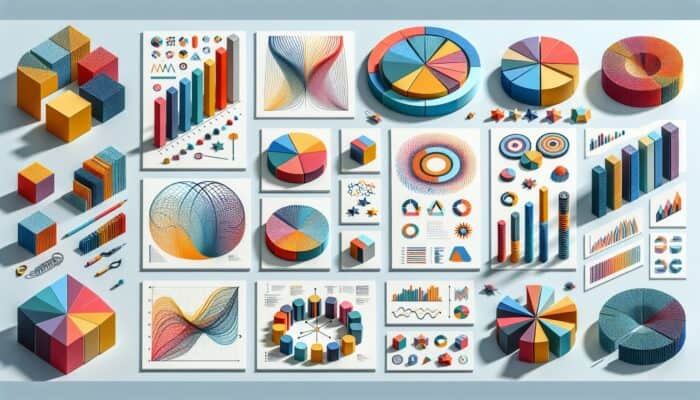Empower Your Skills in Infographic Design with This In-Depth Guide
Key Design Principles for Crafting Engaging Infographics

To create infographics that resonate with your audience, a comprehensive understanding of essential design principles is crucial. Achieving balance is fundamental for providing visual stability, allowing your audience to engage with the information without feeling overwhelmed. This balance might be realised through symmetrical layouts or careful distribution of design elements. Furthermore, contrast plays a vital role in highlighting key data points; for instance, incorporating bright colours against neutral backgrounds can ensure that critical information is prominently displayed. Additionally, alignment is key for organising and connecting various elements, guiding the viewer’s eye smoothly through the content. A well-aligned infographic enhances clarity and coherence, enabling readers to digest the narrative effortlessly. By concentrating on these design principles, you can produce visually compelling and impactful infographics that captivate audiences across various platforms.
Understanding Colour Theory to Enhance Your Infographic Design
Colour is not merely an aesthetic choice; it is a powerful tool that significantly influences perception and audience engagement. A deep understanding of colour theory is essential for designing effective infographics. The colours you select can provoke emotional responses, establish the desired tone, and steer the viewer's attention. For instance, warm colours such as red and orange can create a sense of urgency, while cooler hues often evoke calmness. When crafting infographics, adhere to these essential principles of colour psychology:
- Utilise contrasting colours to create a hierarchy, allowing vital information to be easily distinguished.
- Limit your colour palette to three or four primary colours to maintain visual consistency.
- Choose colours that align with your message; for example, green may represent sustainability.
- Be mindful of cultural interpretations—colours can carry different meanings across diverse societies.
By integrating these guidelines into your designs, your infographics can effectively and powerfully communicate their intended messages to the audience.
Enhancing Readability Through Thoughtful Typography Choices
Typography is a crucial aspect of ensuring that your infographic conveys information in an effective manner. The selection of fonts and text sizes can significantly improve readability and viewer engagement. Using sans-serif fonts for body text is often recommended, as they are typically easier to read on digital screens. Additionally, maintaining consistency by limiting your design to two or three complementary fonts—one for headings and another for body text—is essential. Moreover, text size is critical; headings should be significantly larger than body text to create a clear hierarchy. Line spacing and letter spacing are also important factors that can dramatically enhance readability. Ensure there is sufficient spacing to avoid cramped text, allowing viewers to process the information with ease. By carefully considering typography, you can elevate the clarity and overall impact of your infographic.
Effective Data Visualisation Techniques for Creating Engaging Infographics

Choosing the right visualisation method is essential for representing data in an engaging and meaningful manner. Infographics can utilise a variety of methods such as charts, graphs, and icons to convey information effectively. For example, bar charts are excellent for comparing quantities, while pie charts effectively showcase proportions. Moreover, line graphs are particularly effective at illustrating trends over time. Incorporating icons not only enhances the visual appeal but also provides context to complex data. A thoughtfully designed infographic should employ these techniques to ensure that data is not merely presented but made easily comprehensible. When selecting visualisation methods, consider the nature of the data and the specific narrative you wish to share.
Strategies for Crafting Infographics That Narrate a Compelling Story
Examining Real-World Examples of Impactful Infographics
Infographics are more than just visually attractive graphics; they serve as potent storytelling tools that have demonstrated effectiveness in various contexts. A notable example is the “How to Save Water” infographic produced by the Environmental Protection Agency, which transforms complex statistics about water usage into engaging visuals. This infographic not only educates viewers but also inspires real-world action. To replicate such success, start by identifying your audience’s needs and the story you intend to convey. Then, prioritise clarity and impact in your design. Break the information into digestible segments and employ visual hierarchies to guide viewers through the narrative seamlessly. By modelling your design after successful examples, you can create infographics that resonate deeply and motivate proactive responses.
Analysing Data Visualisation Techniques for Enhanced Storytelling

Data visualisation techniques are essential for transforming abstract figures into compelling narratives. Various methods can be utilised, each offering unique impacts on storytelling. Consider these prevalent visualisation tools:
- Bar charts are ideal for comparing categories and highlighting differences.
- Line graphs are effective for illustrating trends over time, making data relatable.
- Heat maps are useful for visualising data density and revealing patterns.
- Infographics integrate multiple data points into a cohesive visual narrative.
Each technique serves a specific purpose and can significantly enhance the clarity of your message. For instance, heat maps can uncover patterns within intricate datasets that may not be immediately apparent. By comprehending the advantages and limitations of each method, you can select the most suitable tools for your infographic, thereby elevating your storytelling capabilities to new heights.
Building a Narrative through Infographics: A Step-by-Step Guide
Crafting a narrative through an infographic involves more than simply presenting data; it necessitates weaving a cohesive story that captivates the audience from beginning to end. Start by outlining the primary message you wish to articulate and structure the infographic around that central theme. Create a clear visual path to guide the viewer’s gaze, ensuring that each element reinforces the narrative flow. Incorporate visual metaphors and relevant icons that resonate with your audience's experiences. By employing a structured narrative featuring a beginning, middle, and end, you can construct a compelling story that maintains viewer interest throughout. Through effective storytelling techniques, infographics can cultivate deeper connections and understanding, ensuring your message is not just memorable but impactful.
How Can Infographics Enhance the Effectiveness of Communication?
What Essential Features Make an Infographic Memorable?
Memorable infographics possess specific characteristics that engage and resonate in the minds of viewers. Primarily, simplicity is paramount; overwhelming an infographic with excessive information can lead to confusion and disengagement. A clean, uncluttered design that concentrates on essential points will resonate more effectively. Moreover, relevance is crucial; the infographic must connect with the audience’s interests or needs. This connection can be established through familiar themes or relatable data. Creativity is another significant factor; unique and imaginative visuals can capture attention and stimulate curiosity. By integrating these elements, infographics can transform into memorable tools that leave a lasting impression on viewers.
Can Infographics Simplify Complex Information for Enhanced Understanding?
Infographics excel at transforming complex information into digestible visuals that enhance comprehension. By breaking down intricate data into easily understandable components, they enable viewers to quickly grasp essential concepts. The use of visuals such as charts, icons, and illustrations helps distil complicated ideas into straightforward representations. For instance, a multi-step process can be effectively illustrated with a flowchart, simplifying the viewer's understanding. Furthermore, infographics can incorporate storytelling techniques to guide viewers through complex information logically, ensuring clarity and sustained engagement. This simplification is particularly vital in today’s fast-paced environment, where attention spans are limited, making infographics an invaluable tool for modern communication.
How Do Infographics Foster Audience Engagement and Interaction?
The psychological impact of visual storytelling through infographics is profound and multifaceted. By engaging both visual and cognitive processes, infographics can significantly enhance audience interaction and retention. They leverage colour, imagery, and layout to capture attention and evoke emotions, drawing viewers into the narrative in a captivating manner. Additionally, the structured presentation of information encourages viewers to explore further, fostering curiosity and deeper engagement with the content. The combination of compelling visuals and informative text creates a dynamic experience that can greatly enhance participation and feedback. Consequently, effective infographics can transform passive viewers into active participants in the storytelling process.
How Can Infographics Improve Information Retention Rates?
Infographics play a vital role in enhancing long-term memory retention among viewers. Research indicates that visual aids are more likely to be remembered than text alone, making infographics a powerful asset in education and communication. The combination of imagery and concise text caters to diverse learning styles, reinforcing understanding through repetition. By presenting information in visually engaging formats, infographics can create mental associations that significantly aid recall. Moreover, when viewers engage with content that resonates with them emotionally or personally, they are more likely to retain that information. Ultimately, strategically implementing infographics can markedly enhance the retention of crucial information.
What Role Do Infographics Play in Promoting Cross-Cultural Communication?
Infographics can serve as essential bridges in cross-cultural communication, effectively transcending language barriers and conveying messages across diverse groups. The visual elements employed in infographics are generally understood universally, allowing them to communicate complex ideas without relying heavily on text. This form of visual storytelling is particularly beneficial in multicultural settings, where language differences may lead to misunderstandings. By focusing on universally recognisable symbols and imagery, infographics can foster inclusivity and understanding among varied audiences. As globalization continues to expand, the ability to convey information across cultures becomes increasingly vital, making infographics an indispensable tool in today’s interconnected world.
Essential Tools and Software for Creating Engaging Infographics
Leading Infographic Design Platforms You Should Consider
The digital landscape offers an array of platforms for crafting stunning infographics that capture attention. Some of the most widely used design tools include:
- Canva: Renowned for its user-friendly interface and extensive library of templates tailored to various design needs.
- Venngage: Offers specialised templates and icons designed for diverse industries, enhancing creative possibilities.
- Piktochart: Particularly effective for creating data-driven infographics with its intuitive features and robust design capabilities.
- Adobe Illustrator: An advanced tool that provides comprehensive design options for professional designers seeking full control over their projects.
These platforms cater to various skill levels, from beginners to experienced designers, simplifying the process of creating compelling infographics. Each tool offers unique features that can assist in streamlining the design process while encouraging creativity and innovation.
Evaluating Free versus Paid Infographic Tools for Your Needs
The decision between using free and paid infographic tools primarily depends on your specific design requirements and objectives. Free tools typically provide basic functionalities and a limited selection of templates, which may be adequate for quick projects or personal use. However, they often lack advanced features such as high-resolution downloads or extensive customisation options. In contrast, paid tools generally offer a wider range of functionalities, including premium templates, additional design elements, and enhanced customer support. Investing in a quality paid tool can yield more professional results, particularly for businesses that rely on infographics for their marketing and communication strategies. Weighing the pros and cons of each option can assist you in selecting the appropriate tool to fulfil your objectives.
Mastering Infographic Software for Optimal Results
Gaining proficiency in infographic design software can significantly enhance your visual storytelling capabilities. Begin with the basics by exploring tutorials provided by your chosen platform; many tools offer guided lessons that help users effectively learn their features. Practise is essential; experimenting with different design elements can lead to newfound creativity and innovation. Additionally, seek out online communities or forums where fellow designers share invaluable tips, tricks, and constructive feedback. Collaborating with others can offer fresh insights and inspiration. Continuous learning and practice will strengthen your competency in infographic design, empowering you to create visually captivating narratives that resonate with your audience.
What Are the Fundamental Components of an Engaging Infographic?
The Significance of a Clear Narrative in Infographic Design
A clear narrative serves as the foundation for an engaging infographic. Without a well-defined story, viewers may struggle to comprehend the information being presented. Begin by identifying the central message of your infographic and construct a logical flow around it. Every design choice should support the narrative, guiding viewers systematically through the content. Employ headings, subheadings, and visual breaks to delineate sections, facilitating ease of understanding for the audience. By prioritising narrative clarity, you can craft infographics that not only enhance visual appeal but also communicate essential information effectively to your viewers.
The Role of Visual Hierarchy in Enhancing Infographic Impact
Visual hierarchy is a crucial aspect of infographic design that greatly improves comprehension. Arranging elements in a way that emphasises the most important information helps direct the viewer’s attention effectively. Employ varying font sizes, colours, and placements to establish a clear order of information. For instance, central messages should be larger and more prominent, while supporting details can be smaller. Furthermore, using directional cues, such as arrows or lines, can guide the viewer through the infographic. By thoughtfully implementing visual hierarchy, you can enhance the overall effectiveness of your infographic and ensure that key points are highlighted and easily understood.
The Contribution of Icons and Illustrations in Enriching Infographics
Icons and illustrations not only enhance the visual appeal of infographics but also clarify complex ideas. They can serve as visual shorthand for concepts, making information more digestible for viewers. For instance, using a light bulb icon can symbolise innovation or ideas, while a globe can represent global data. This strategy not only improves understanding but also adds a creative flair to the overall design. When choosing icons, ensure they align with your narrative and maintain stylistic consistency throughout the infographic. By thoughtfully incorporating icons and illustrations, you can enrich the viewer's experience and enhance comprehension of the information presented.
Research-Backed Advantages of Using Infographics in Visual Storytelling
Proven Enhancements in Information Retention with Infographics
Research has shown that infographics can significantly improve information retention among viewers. Studies indicate that visual information is processed more rapidly and remembered longer than text alone. This phenomenon is attributed to the brain's ability to recognise patterns and images more quickly than words, facilitating better encoding of information into memory. Infographics utilise visual aids that reinforce learning through both sight and cognition. By merging visuals with concise text, infographics cater to various learning styles, thereby further enhancing retention rates. Consequently, employing infographics as educational tools can lead to improved understanding of the material presented.
Boosting Engagement and Shareability Through Infographics
Infographics are inherently more likely to be shared across social media platforms, driving engagement and virality. Their visual nature appeals to users, prompting shares and interactions that text-based content may not achieve. Research indicates that users are more inclined to share visually compelling information, particularly when it simplifies complex topics. This characteristic makes infographics exceptionally effective for marketing strategies aiming for viral reach. By leveraging the shareability of infographics, brands can maximise their content's visibility and broaden their audience across social networks, significantly amplifying their message.
Facilitating Improved Comprehension of Complex Data with Infographics
Infographics excel at simplifying complex data into easily digestible visuals for audiences. They convert intricate statistics and concepts into clear representations, enabling viewers to comprehend difficult information without a steep learning curve. Visual storytelling simplifies the learning process, making it accessible to a broader range of audiences. By presenting data in an engaging format, infographics can highlight trends and insights that may be overlooked in traditional reports. As a result, they not only enhance comprehension but also encourage deeper engagement with the subject matter, positioning them as indispensable tools for effective education and communication.
Best Practices for Effectively Sharing and Promoting Infographics
Strategies to Optimise Infographics for Social Media Platforms
To maximise the reach of your infographics on social media, optimising them for each platform is essential. Start by ensuring that your infographic is appropriately sized for different social networks; for example, vertical formats often perform exceptionally well on Pinterest, while square designs are ideal for Instagram. Incorporate engaging captions and relevant hashtags to enhance discoverability, ensuring that your content reaches a wider audience. Additionally, consider including a compelling call-to-action to encourage sharing and interaction among viewers. By tailoring your infographics for specific social platforms, you significantly increase the likelihood of engagement and effectively expand your audience.
Integrating Infographics into Website Content for a Better User Experience
Incorporating infographics into web content can dramatically enhance engagement and improve the overall user experience. To effectively embed an infographic, ensure it is positioned prominently within the content, ideally in relevant sections that support the narrative. Utilise HTML code for proper formatting to guarantee that the infographic displays correctly across various devices. Furthermore, consider providing a summary or key points alongside the infographic to facilitate understanding and inspire deeper exploration of the content. This approach can create a more engaging experience for readers, increasing interaction and time spent on your website overall.
What Are the Optimal Times to Share Infographics for Maximum Impact?
Timing is crucial in determining the visibility and engagement of your infographics. Research suggests that weekdays, particularly Tuesday through Thursday, are optimal for sharing content, as users are generally more active during these times. Additionally, consider the time of day; late mornings and early afternoons often yield higher engagement rates, as users are likely taking breaks or commuting. Furthermore, analyse your audience's online habits to identify the best times tailored to your specific followers. By strategically scheduling your infographic shares, you can optimise visibility and engagement, driving greater interaction with your content.
Frequently Asked Questions (FAQs)
What constitutes an infographic?
An infographic is a visual representation of information or data crafted to convey complex information quickly and clearly. It combines graphics, charts, and text to effectively communicate messages in an engaging format.
How can I create an infographic?
To create an infographic, start with a clear concept that encapsulates your message, gather relevant data to support that concept, select an appropriate design tool, and utilise templates or established design principles. Finally, blend visuals and text to narrate a cohesive story that effectively communicates your intended message.
What defines a high-quality infographic?
A high-quality infographic is visually engaging, easy to comprehend, follows a logical structure, and communicates a clear message. It should integrate relevant data while maintaining design consistency throughout the piece.
How can infographics be utilised in marketing?
Absolutely, infographics are powerful marketing tools. They can simplify complex ideas, enhance audience engagement, and are highly shareable on social media platforms, effectively promoting brand visibility and awareness.
What strategies can I employ to make my infographic share-worthy?
To make your infographic share-worthy, ensure it is visually compelling, provides valuable information, includes engaging graphics, and utilises a clear call-to-action that encourages viewers to share the content with their networks.
Which software is best for creating infographics?
Popular infographic design tools include Canva, Venngage, and Adobe Illustrator. Each offers unique features and functionalities, making them suitable for a variety of skill levels and design needs, ensuring a wide range of options for users.
Are there free tools available for infographic creation?
Yes, there are several free infographic tools, such as Canva and Piktochart, which provide basic functionalities and templates to help you create infographics without incurring costs.
How do colours affect infographic design?
Colours can evoke emotions and significantly influence perception. Choosing the right colour palette can enhance the infographic's message and create visual interest, making the content more engaging and memorable for viewers.
What types of data are most effectively presented in infographics?
Infographics are particularly effective for presenting statistics, comparisons, processes, and timelines. They excel at simplifying complex data into digestible formats, making it easier for audiences to understand and interpret the information.
Can infographics truly improve information retention?
Definitely, infographics can significantly enhance information retention by combining visuals and text, which makes it easier for viewers to understand and remember the information presented. The engaging format reinforces learning and comprehension.
Discover more insights in our world on X!
The Article Creating Infographics For Visual Storytelling: A Universal Guide was first published on https://marketing-tutor.com
The Article Infographics for Visual Storytelling: A Comprehensive Guide Was Found On https://limitsofstrategy.com

